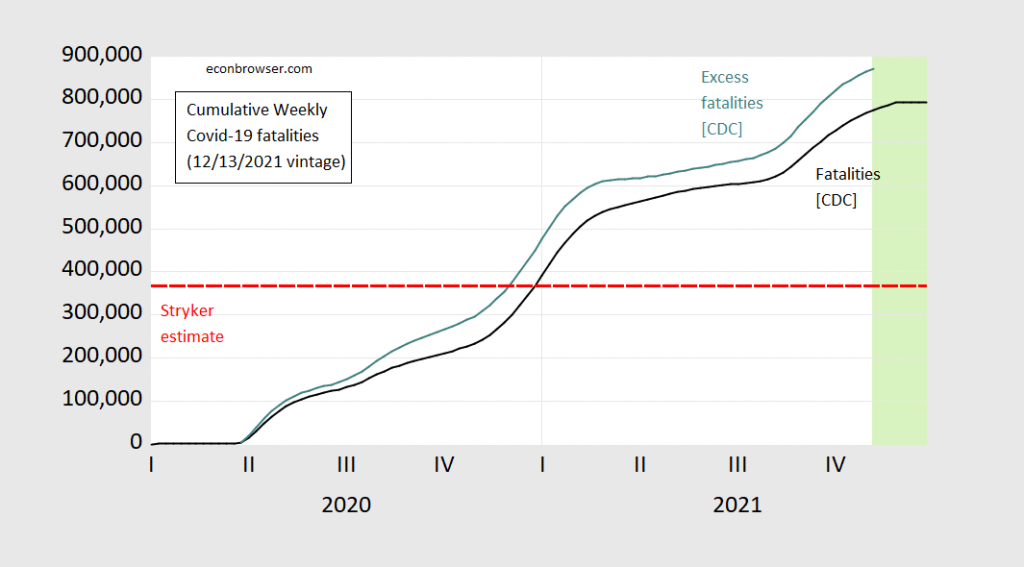Manchin’s announcement that he would vote against BBB constituted a kind of event study. Here are the market indicators of expected inflation and economic activity.
Category Archives: Uncategorized
Per Capita GDP Doing Just Fine, Linearly, since 1947
If you don’t believe me, take a look at this time series plot of available US GDP per capita.
On Confidence Intervals and Logs
Confidence Intervals
As the Nation Approaches 800,000 Covid Fatalities [updated graph]
Commenter Rick Stryker wrote confidently on August 20, 2020:
If I’m right, then we’d get a total death toll of 368K.
As of the 12/13/2021 CDC release of officially tabulated Covid-19 fatalities, cumulative fatalities through the week ending 11/27 were 793.834, somewhat exceeding 368,000.
[updated 12/16, 10:30am Pacific] Here is a graph to depict what this “forecasting miss” looks like:
Figure 0: Cumulative weekly fatalities due to Covid-19 as reported to CDC for weeks ending on indicated dates (black), cumulative excess fatalities calculated as actual minus expected (teal). Note excess fatalities equals zero for early observations where expected exceeds actual. Light green shading denotes CDC data that are likely to be revised. Source: CDC 12/13/2021 vintage, and author’s calculations.
Interests and Policy
Reader JohnH writes:
There is little discussion of the industry influence in the media, and even on Google, and certainly not among economists, who shun any discussion of power dynamics and corporate influence in the global economy like the plague.
FT-IGM US Macroeconomists Survey for December
Variation in the Potential Geographic Impact of Omicron
Very tentative (non-clinical test) indications are that vaccination helps reduce incidence and severity of infections from the omicron variant. If this proves true, then we should expect vaccination rates to be critical to impact. Here’s the map, county-by-county.
Interpreting the Employment Release – November 2021
A couple of plots to highlight the fact that the November number on nonfarm payroll employment should be understood in the context of ongoing revisions in the data (see release here).
Business Cycle Indicators as of December 1st
Monthly GDP grows 1.5% m/m, pushed by exports. Along with current expectations for this Friday’s employment release, we have the following picture.
Financial Markets and Omicron and Powell
Five year inflation breakeven (unadjusted) down, 10yr-3mo term spread down, VIX and EPU up, and S&P 500 down.
